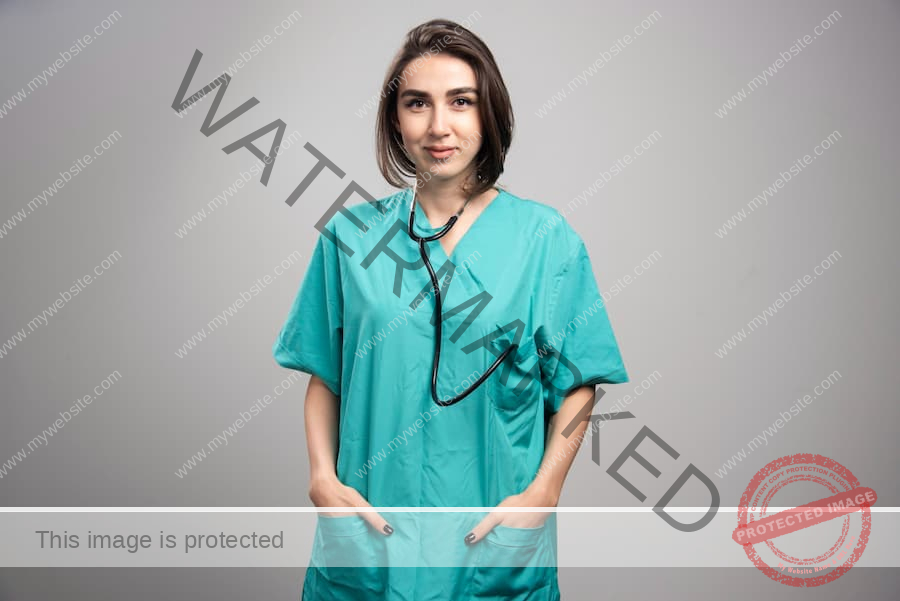Hygienic Medical uniforms are essential for several important reasons. Medical scrubs, lab coats, and jackets let patients quickly identify staff members and help define a healthcare worker’s professional identity. This exposure improves patient experience and increases trust. More significantly, hospitals and clinics around the globe continue to worry about healthcare-related infections (HAIs). Clean, well-kept uniforms can greatly lower the chance of infection propagation. That’s why healthcare professionals often give top importance to cleanliness in workwear, closely followed by comfort, fit, and function. Choosing superior uniforms, such as those from nurse uniform UK, guarantees that staff stay presentable and safe during their shifts. A dependable uniform helps hospitals as part of a general infection control strategy.
Prevent the Spread of Germs
Medical uniforms shield medical personnel from dangerous bacteria. Doctors, nurses, and other hospital personnel interact with several patients daily. Every interaction offers a chance of transferring microbes from one room to another. Uniforms made of easily washable or antibacterial fabrics help to stop this migration. Wearing fresh scrubs for every shift lowers the risk of infection. Frequent changing of uniforms restricts the transmission of diseases across wards.
Promote Cleanliness in the Workplace
In a hospital, uniforms set the tone for cleanliness. Staff members who are dressed in crisp, well-kept clothes indicate the importance of cleanliness. Not only in their appearance but also in their work surroundings, it motivates everyone to hold themselves to higher standards. A neat uniform also reminds personnel to observe safety precautions, including handwashing, tool sanitising, and cross-contamination avoidance. Hygiene becomes part of the workplace culture when it becomes part of the dress code.
Separate Work from Outside Contamination
Wearing medical uniforms solely inside the hospital helps to keep sensitive regions free of outside bacteria. Many times staff must change into their uniforms at work and leave them behind after their shift. This technique helps reduce contact with outside contaminants, dust, or allergens that might violate a clean environment. Furthermore guarantees that any germs collected during a shift are kept inside the building rather than going home or to public areas. Hospitals reduce the chance of transmitting infections outside of their walls by separating workplace and home clothing.
Support Proper Laundering Practices
Strict rules for washing uniforms are typically in place at hospitals. Medical uniforms must be sterilised at high temperatures with sanitisers to eliminate dangerous bacteria, unlike other clothing. This makes sure every shift begins with clean apparel. Well-washed in a regulated environment, uniforms get rid of biological fluids, dust, and pollutants. Casual attire cannot achieve these high standards in cleaning. This is why good hospital hygiene depends on correct medical clothing.
Reduce the Risk of Patient Infection
Hospital patients are frequently fragile. Many are extremely vulnerable to infections because their immune systems have been compromised. Designed for cleanliness and frequent change, uniforms help to shield themselves against other sickness. Patients are comforted by staff wearing clean scrubs or lab coats. It calms them by emphasizing the importance the institution places on cleanliness. Additionally fostering faster recovery and patient trust in the treatment they get helps to create this feeling of security.
Allow for Role-Based Hygiene Control
Various hospital tasks call for different degrees of cleanliness; surgeons, nurses, custodial personnel, and lab technicians all have different amounts of exposure to chemicals, bacteria, and fluids. Medical uniforms are tailored to satisfy each role’s hygienic requirements. Operating room scrubs, for instance, are manufactured with a particular fabric to tolerate long hours and sterilisation. Chemical spills and blood splashes on clothing are protected by lab coats. While keeping everyone safer, this role-specific equipment lowers health hazards. Colour-coded uniforms also facilitate fast recognition of roles, which might be especially helpful in high-risk settings or during emergencies. It guarantees that only the appropriate people have access to sterile areas or do delicate treatments.
Reduce Cross-Contamination During Shifts
Staff members in a hectic hospital often move from one patient or department to another. If outfits are not made to stop it, this movement might easily spread infections. Breathable, moisture-wicking fabrics cut sweat, odour, and germ accumulation when they are properly fitted. Uniforms made with antimicrobial fabric work throughout the shift to actively combat bacterial development. Medical clothes are a main element of a thorough infection control strategy, together with hand glove usage, sanitation, and adequate personal protective equipment.
Conclusion
Medical uniforms assist hospital cleanliness, protect patients and employees, and help to prevent the spread of deadly bacteria, in addition to making personnel seem professional. Every little thing from fabric choices to washing procedures helps to create a healthier hospital environment. Investing in well-kept, high-quality uniforms by hospitals is not just a cosmetic improvement; it’s also a safety investment. Even tiny details can save lives in the healthcare environment of today. Though simple, a clean uniform has a strong and far-reaching impact on hygiene.
Visit Manhwa for more informative blogs.

